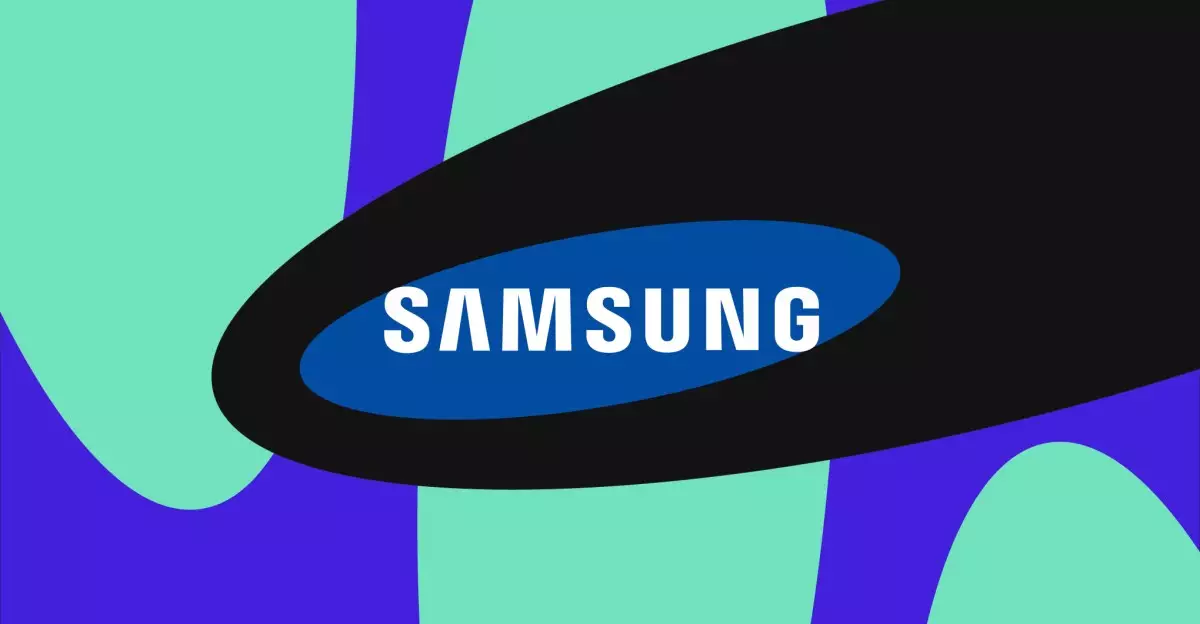The smartphone market is witnessing an intriguing climate as established giants like Samsung prepare to unveil their latest offerings. With the impending launch of the **Galaxy A56**, the company seems poised to position itself against formidable competitors such as Apple’s iPhone SE and Google’s upcoming Pixel 9a. As we delve into the anticipated features, design elements, and marketing strategies surrounding the A56, it becomes essential to evaluate how Samsung aims to carve out its niche in a rapidly evolving landscape.
Leaked information, most notably from renowned tipster Evan Blass, has provided a glimpse into the design aesthetic of the Galaxy A56. The device appears to adopt a familiar yet fresh look, presenting itself in four distinct colors: silver, pink, black, and pale green. This choice of colors indicates Samsung’s attempt to cater to a diverse audience, appealing to various consumer preferences.
More striking than the color palette are the design modifications, particularly the raised power and volume buttons that stand out from the device’s edge. Such a design feature could enhance user ergonomics, allowing for easier accessibility while simultaneously lending a contemporary touch to the phone. Additionally, the redesigned camera island, which groups the three lenses together against a black background, reflects a purposeful approach to aesthetics while maintaining functionality. These design choices become crucial as Samsung navigates the competitive midrange smartphone sector, where visual appeal can translate into consumer interest.
Hardware Specifications: A Competitive Edge?
Beyond visual design, the internal specifications of the A56 play a crucial role in its market competitiveness. Industry speculation points to the phone being powered by Samsung’s Exynos 1580 chipset, a promising development for a midrange device. Early performance benchmarks, such as a Geekbench score associated with the A56, suggest that this chipset could offer a powerful, yet energy-efficient option that might rival competitors’ offerings.
In terms of battery life, possibilities include a substantial 5,000mAh battery capacity paired with 45W wired charging. Such specifications would place the A56 ahead of other midrange devices, like the flagship Galaxy S25, which currently supports only 25W charging. This decision could significantly appeal to users who prioritize battery longevity and quick charging capabilities, thereby presenting the A56 as an attractive option for tech-savvy consumers.
The camera specifications also portend a solid improvement over previous generations. Featuring a 50MP primary camera alongside a 12MP ultrawide and a 5MP macro lens, the A56 seems poised to deliver a versatile photography experience. With the introduction of a 12MP front-facing camera, Samsung is likely aiming to win over selfie enthusiasts, a demographic that increasingly influences smartphone purchasing decisions.
Samsung’s decision to potentially launch the Galaxy A56 in March aligns strategically with the timelines set by competitors like Apple and Google. Rumors suggest that Apple will unveil a new variant of the iPhone SE imminently, and with the Pixel 9a’s release on the horizon, the stakes are high. The timing of these releases underscores how crucial it is for Samsung to not only introduce the A56 but to ensure that it captures market attention amidst competing devices.
The Galaxy A54 was appreciated at a price point of $449, yet its successor, the A55, notably avoided the U.S. market altogether. As Samsung looks to make a more significant impact in North America with the A56, the prospect of availability in a diverse market brings both opportunity and risk. By targeting budget-conscious consumers while still offering innovative features, Samsung could strengthen its foothold in an increasingly competitive market.
In an era dominated by high-end flagship devices, the midrange segment has emerged as an attractive battleground for companies seeking to tap into cost-sensitive consumers. The Galaxy A56’s anticipated features, combined with a contemporary design, position it as a formidable challenger against established models like the iPhone SE. As the launch date approaches, all eyes will be on how Samsung’s newest offering resonates with users and whether it can effectively establish itself within the U.S. market. Time will tell if the Galaxy A56 is indeed the breaking point that elevates Samsung’s standing in the midrange smartphone arena.


Leave a Reply